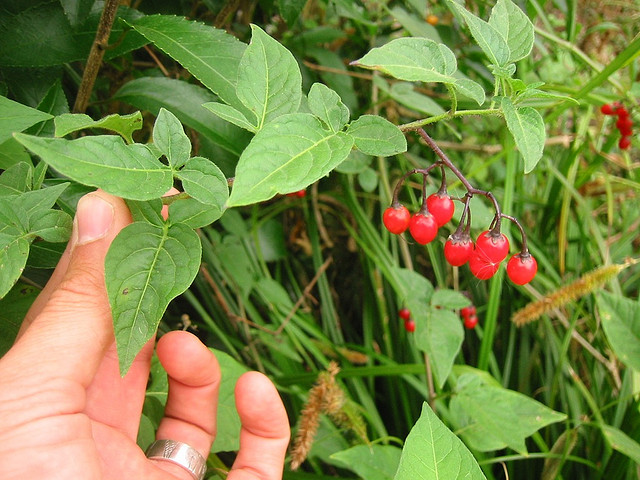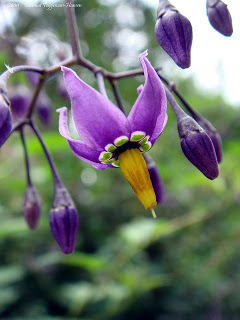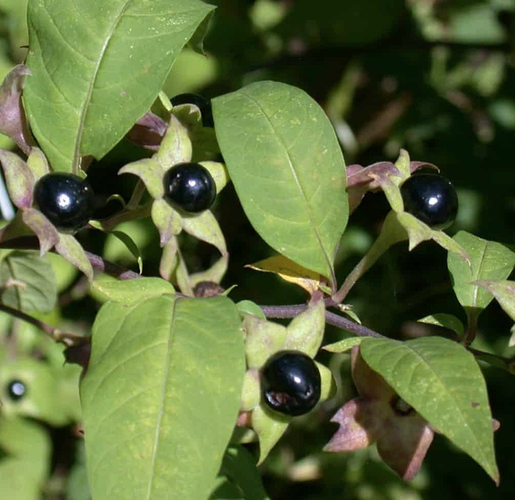Well, I can’t say that I wouldn’t welcome being able to eat occasionally from fruits and vegetables in the future, but I’m not convinced that it’s healthier than a well balanced animal diet. The question I have is, what is that and can we even obtain it?
What do we really know about ancestral diet?
Maybe because they need to? Their body wants to weigh more…
I would love to be another 20 pounds lighter but my body doesn’t seem to…
I plateaued for 18 months at 210 pounds on keto then went carni and dropped another 10 pounds.
The last 20 however I’ll probably have to do extended fasts for which I’m not sure I want to… so I could say I’m still too heavy for my “ideal” weight but my body seems very happy here.
Brings to mind Mikayla Peterson’s LION diet for autoimmunity issues - where, most ironically, organs are considered not necessary. - but that can’t possibly bode well for the much longer term in terms of micronutrients, imho. So, it’s confusing to me why she picked the lion to name it after, I doubt she meant it to reference captivity…
https://mikhailapeterson.com/blog/liondietblog
Another thing that is often minimized or sidestepped is the critical, beneficial weight gain caused by proper mineralization, which requires transformed absorption capacities via enzymatic healing and mineral density. Proper mineral weight means dense muscle and bones, rather than porous bones and fatty or otherwise underfunctional or skimpy muscles.
Without attuning to the expedited dietary regimens options for that (trace minerals supplementing and/or heavy cave salt usage, living clay, fermented foods, or superfoods pro-enzymes like Ginger) remineralization may take years instead of months, as the body prioritizes its health concerns. 
And when remineralization happens, it can easily mean a difference of 15 pounds or more just in terms of bones/muscle as Weston Price observed in the mineral dense traditional peoples compared to mineral deficient ones of the same genetics. Add to that the weight of gut microbiome mass recovery (supposedly a healthy one is some 6 pounds, compared to the average industrial person’s 1-2 pounds) - and there can be about 20 pounts of weight that is just basic earthling health weight and not even that which can be built with strength training techniques and higher protein, etc.
3 pounds of microbiome in the industrialized human that’s where that other 3 pounds of soil based microbiome is missing for digesting plants in modern humans and then they wonder why they can’t digest plants and get all these gastrointestinal problems when they eat leafy greens.
Some people just don’t get it and never will?
The body always wants to weigh more when it’s fattening. That’s Taubes entire thesis. We don’t fatten because we eat, we eat because we’re fattening. But that doesn’t mean it’s a good thing. We certainly don’t see it as positive when the body wants to weigh more on the SAD.
Body By Science, Fasting and BFR Training Results (with pics!)
The gut biome is a garden. In some of us it is a jungle. In others a primordial soup.
How does your garden grow?
One thing we don’t want; what is supposed to be growing in the garden of the lower intestines or colon over-growing into the smaller intestines or the other way around or we end up with SIBO and/or IBS.
Indeed. And it’s not like high tech culture’s disconnection from earth-based views is helping people get it either! For me personally, I’ve found that my deep love for the natural world and my research into my family’s pre-industrial roots very insightful and compelling, combined w/ my longstanding studies in east-west traditional healing.
It’s only been in recent years that the GI tract’s enteric nervous system realities have been named and “validated” in western industrial science, and the concept of the microbiome named and increasingly researched. Whereas Vedic medicine (and other ancient healing lineages) has viewed digestion as the gateway of health for thousands of years in the written tradition, and more beyond that in the oral tradition, etc.
As you prob already know, ancestors viewed health as way more than the physical/seen body , valuing several additional bodies that roughly correlate to the emotional, mental, spiritual, energy field, epigenetic, etc.
This is another interesting resource on the subject - there’s one or two I haven’t seen yet, some are possibly still in production. “Bread Head” looks intriguing lolol:
As literally all studies that I know of have been done against a high carb background, we simply don’t know. But again, as our predecessors ate a third of their calories from plant sources, the burden of proof that plant-based food (unrefined, approx 35% calories) is unhealthy lays on the ones who claim that carnivore is healthier.
I’d assume that once you get to Kraft pattern 1 (or maybe 5, the one where you have low insulin) you’re fine to eat some carbs. However, it’s highly individual which ones that should be, the ones that are high in resistent starch and low in antinutrients (like cooked rice or potatos that were kept in the fridge for a day) should be safe, and perhaps just a wide variety of vegetables/fruit (but small amounts) that were available 10.000 years ago (paleo diet).
But we don’t know if everybody with metabolic syndrome returns to Kraft 1 or 5. Therefore, some of us may be better off eating no digestible carbs at all for the rest of their lives.
I’m always sceptical if someone markets itself so heavily. She certainly is an inspiring story (and I’ll assume here that what she says is true), but she also seems to be more interested in making money than in helping others.
Where are you getting this from? I’ve looked at recent stats on hunter gatherers and the percentages are all over the map with Northern ones being far less. We have no idea the plant consumption percentages of the ancestors that resulted in our current genome except that they were extremely high level meat eaters (based on the nitrogen levels in their collagen).
My own thoughts, which align with some paleo-anthropology, is that plants probably did not represent much of our calories except during times of starvation. I was heavily into wild plant edibles as a hobby for many years (I live in virtually untouched country). People in our industrialized world have no idea how sparse decent caloric wild plant food is in many parts of the world that hunter gatherers survived in. There is no way to get 35% of calories from plants. Maybe you could do this two months of the year if you foraged constantly, but honestly I doubt it. There is an interesting survival show called “Alone”. Season after season of experts in some of the most untouched wilds and not one of them could get any reasonable amount of calories from plants. Sure there are places on the planet where you can, but we spread everywhere during an ice age. We have to be able to thrive with little plant nutrition and probably none at all for much of the year.
I think she thought it sounded cool and badass. She launched that name for the diet at the same time as she started her online club ( the Lion’s Den) which costs $500 a year to join. It’s kinda funny. She has so little to offer other than her story but she has a real cult of personality going. Men seem to particularly adore her and she’s cashing in.
She’s been at this diet and telling her story for long before she made a penny. In fact for most of the time she’s taken mostly derision and hate. I think her story is true. In fact, people only started even knowing about her because her dad told her story first and talked about how she’d got him on her diet and how it had helped his conditions. Mikayla would never have been known to anyone if not for the massive fame of her father bringing her story into relief.
And of course unless you are really smart quite a high proportion of those plants could quite possibly kill you too…
@MarkGossage I do think we likely tended to grab every decent fruit we came across. Even as a carnivore it is a battle for me to leave them be when I’m out on my camping trips. They are easy calories and delicious. But leaves, and tubers not so much. The caloric expenditure to obtain them is high and rarely worth it.
Burdock tubers perhaps. Cattails are great and abundant as @Don_Q has said but are an invasive species. They would have been orders of magnitude sparser before the recent environmental changes that have led to their destructive spread. And with tubers, when you take them you are destroying the entire plant. So less the following year.
Nuts are also more of a problem than people imagine. We have hazelnuts growing here. I’ve harvested some. It’s a lot of work, but I’d say calorically worth it if you happen upon a bush. But good luck with that. Year after year I’d go back to the bushes I knew waiting for them to be ripe enough to not make me ill and always, by the time they got there, every other animal had had a go too and all I’d come away with were a few to a few handfuls (and the latter only once in several years of trying). We are in competition with all the other herbivores for those good plant resources. And they are fast.
I believe that’s why other primates claim fruit or nut bearing trees as their territory. They can chase away the other animals and keep most of the bounty for themselves.
I think that our ancestors were very intelligent and figured out plant testing fairly quickly. Most plants are not so toxic that a small amount will kill an adult. Hell, knowing this fact, I’ve tested many unknown plants myself. Even Deadly Nightshade consumption, which is quite toxic, rarely leads to death even in children.
I found your picture super interesting. Our own Deadly Nightshade looks completely different.


Probably just call both “nightshade”. Or Crampy Nightshade. The “deadly” tags sounds like a ‘lies to children’ that may have an unfortunate reverse psychology.
Not so. If you’re in a marshy area, 1 person can collect an a days worth of food in an hour or two. That’s a pretty big caloric pay-off relative to the caloric investment. I think you’re dismissing a very calorie dense tuber we have evidence that paleolithic hunter gatherers availed themselves of. Consider:
No green plant produces more edible starch per acre than the Cat O’ Nine Tails; not potatoes, rice, taros or yams. Plans were underway to feed American soldiers with that starch when WWII stopped. Lichen, not a green plant, might produce more carbs per acre. One acre of cattails can produce 6,475 pounds of flour per year on average (Harrington 1972).
If we assume that hunter gatherers were migratory, which I think is a safe assumption, depletion of .01% of cattails in vast wilderness probably wasn’t particularly disruptive. The damn things bounce back quickly; they’re almost as bad as bamboo. Try getting rid of them!
On top of that, the cat-tail can be used for weaving, and the fluff for bedding and insulation. Insulation is fairly valuable during an ice age! The cat tail is like one stop shopping. It’s also hard to miss a 9 foot tall plant that serves as dinner, bed, and pillow. It seems unlikely that paleolithic hunter gatherers would just ignored them, especially since the roots are still edible in the spring when nothing else is growing.
That doesn’t appear to be true in Europe, and besides, cattails thrive in cold weather environments and are more prevalent the colder a climate becomes. Moreover, the presence of cattails as a calorie source is such a massive advantage that it may well have been a deciding factor in which groups survived to pass genes down during particularly brutal decades where winters were longer and game became sparse. You can make a flour from it in spring, summer, and fall, and it provides flour that can be eaten all winter long. I’m not asserting that this is true obviously, but there is evidence available of artifacts woven from cat-tails, and tools for making cat-tail flour from multiple parts of the world.
Does this mean that every paleo tribe at cattails? No. Does it mean that paleo hunters ate more than 20% of their calories from cattails? No. Could it have been an important part of the calorie intake for people living near them? Absolutely. Could it have provided competitive survival advantage if game was sparse? Yup. Would that increase the odds our own genes were selected for starch metabolism? Yup.

